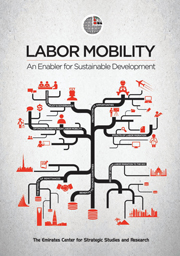Book contents
- Frontmatter
- Contents
- Figures and Tables
- Abbreviations and Acronyms
- Foreword
- Introduction
- 1 The Development Impacts of Temporary Migration and the Protection vs. Opportunities Trade-off
- 2 The Economic Development Benefits of Human Mobility to Source Countries
- 3 The Effects of Remittances
- 4 Recessions and Remittances in Home and Host Countries: An Overview
- 5 Seize the Spotlight: A Case for GCC Engagement in Research on the Effects of Labor Migration
- 6 Migration Policy and Governance in the GCC: A Regional Perspective
- 7 Optimizing benefits from Labor Mobility: The Case for Research Collaboration between Bangladesh and the GCC
- 8 Drivers of Development: The Impact of Indian Labor Migration to the GCC
- Contributors
- Notes
- Bibliography
- Index
8 - Drivers of Development: The Impact of Indian Labor Migration to the GCC
Published online by Cambridge University Press: 05 September 2014
- Frontmatter
- Contents
- Figures and Tables
- Abbreviations and Acronyms
- Foreword
- Introduction
- 1 The Development Impacts of Temporary Migration and the Protection vs. Opportunities Trade-off
- 2 The Economic Development Benefits of Human Mobility to Source Countries
- 3 The Effects of Remittances
- 4 Recessions and Remittances in Home and Host Countries: An Overview
- 5 Seize the Spotlight: A Case for GCC Engagement in Research on the Effects of Labor Migration
- 6 Migration Policy and Governance in the GCC: A Regional Perspective
- 7 Optimizing benefits from Labor Mobility: The Case for Research Collaboration between Bangladesh and the GCC
- 8 Drivers of Development: The Impact of Indian Labor Migration to the GCC
- Contributors
- Notes
- Bibliography
- Index
Summary
The World Bank classifies India as one of the top emigrating countries, where migration is a reality for a large section of the population—11.4 million Indians in 2010. India also figures in three of the top five migration corridors in the South Asia region: India–United States, India–Saudi Arabia, and India–United Arab Emirates. The major destinations of migrants from India are: the UAE, Saudi Arabia, Oman, Kuwait, the United States, Bangladesh, Nepal, the United Kingdom, Canada and Sri Lanka. India also ranks first in the list of top remittance receiving countries, (US $69.8 billion) followed by China ($66.3 billion), and the Philippines ($24.3 billion) in 2012. With a favorable demographic dividend, the International Organization for Migration, IOM predicts that India is likely to emerge as one of the largest migrant-sending countries by 2050, by which time the number of international migrants is expected to reach 405 million.
According to the World Bank, the UAE registered the highest migrant stock, followed by the United States and Saudi Arabia. Twelve countries from around the world are listed as having more than 200,000 Indian migrants. Most of the Gulf countries figure in this list, along with the UK, Canada and Australia.
Estimates made by the Centre for Development Studies (CDS) place the Indian migrant stock at 12 million in 2011, based on earlier work conducted at the time of the global financial crisis.
- Type
- Chapter
- Information
- Labor MobilityAn Enabler for Sustainable Development, pp. 167 - 200Publisher: Emirates Center for Strategic Studies and ResearchPrint publication year: 2013



